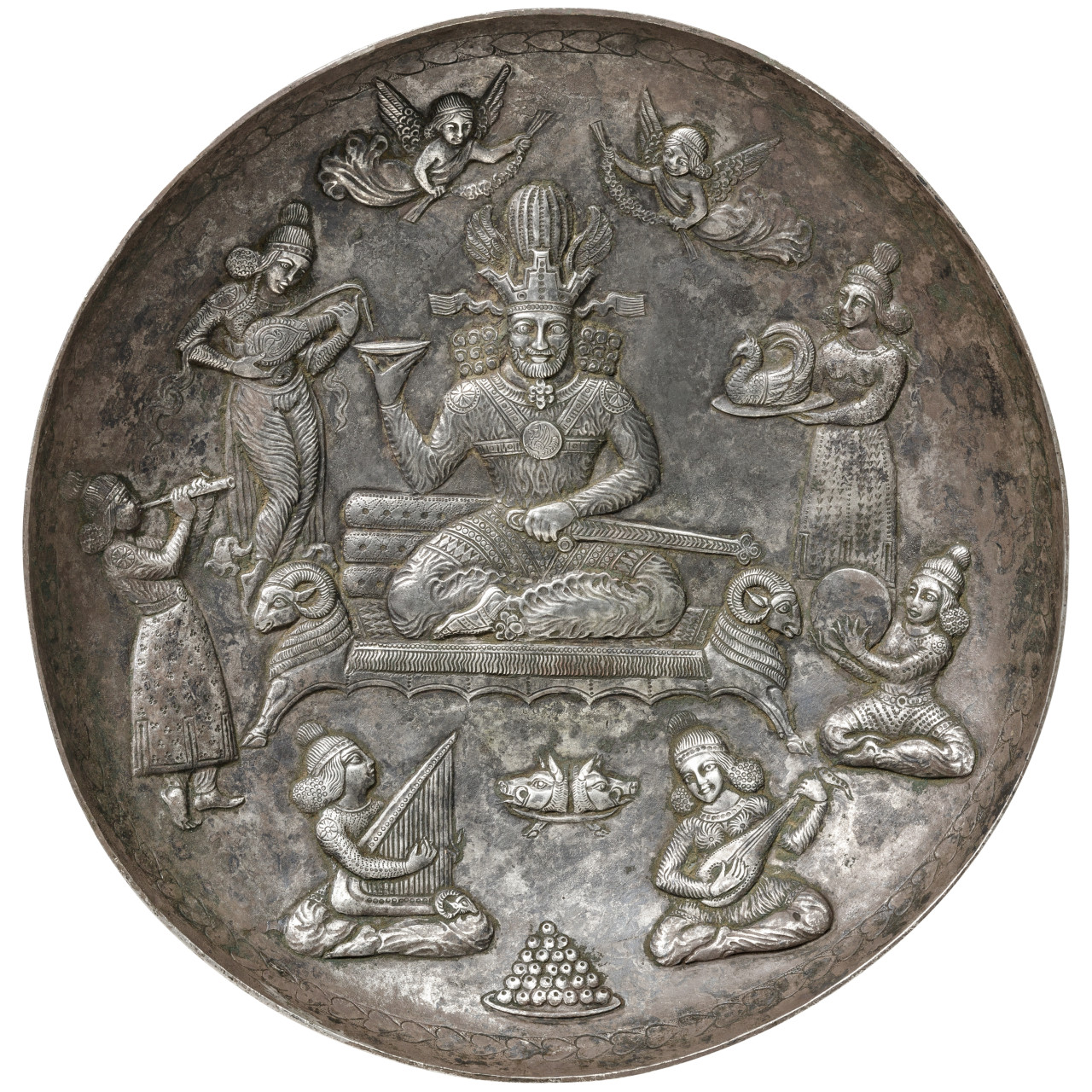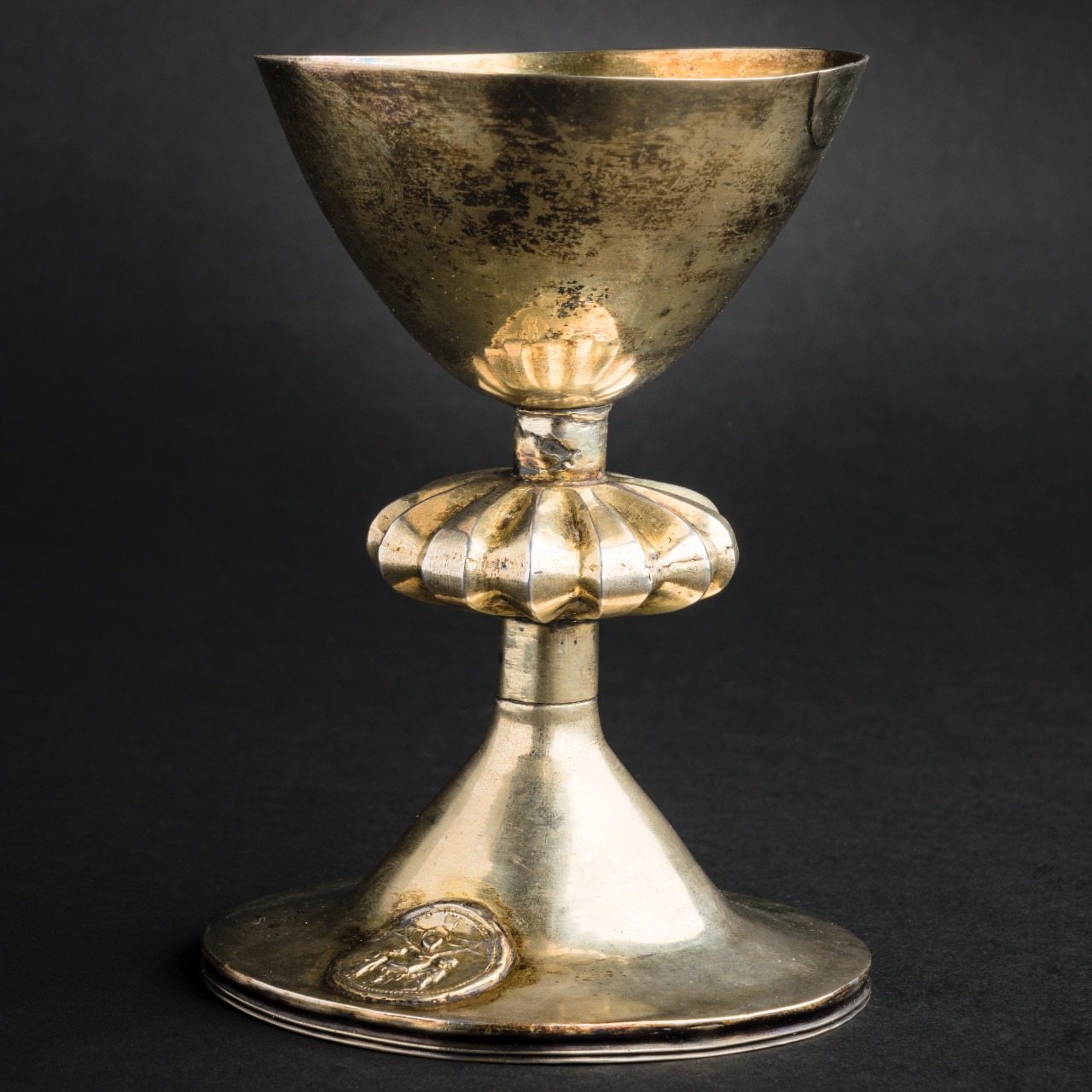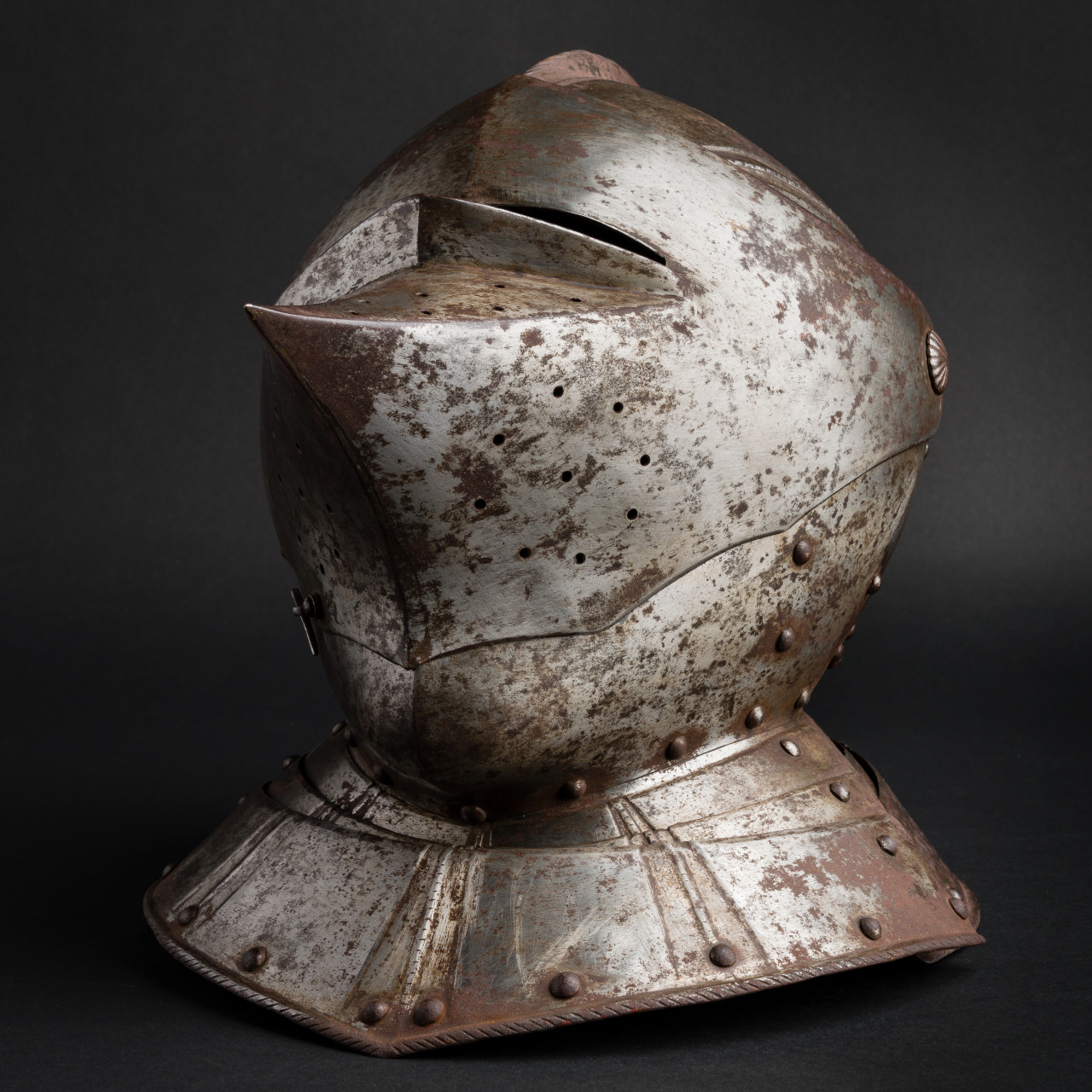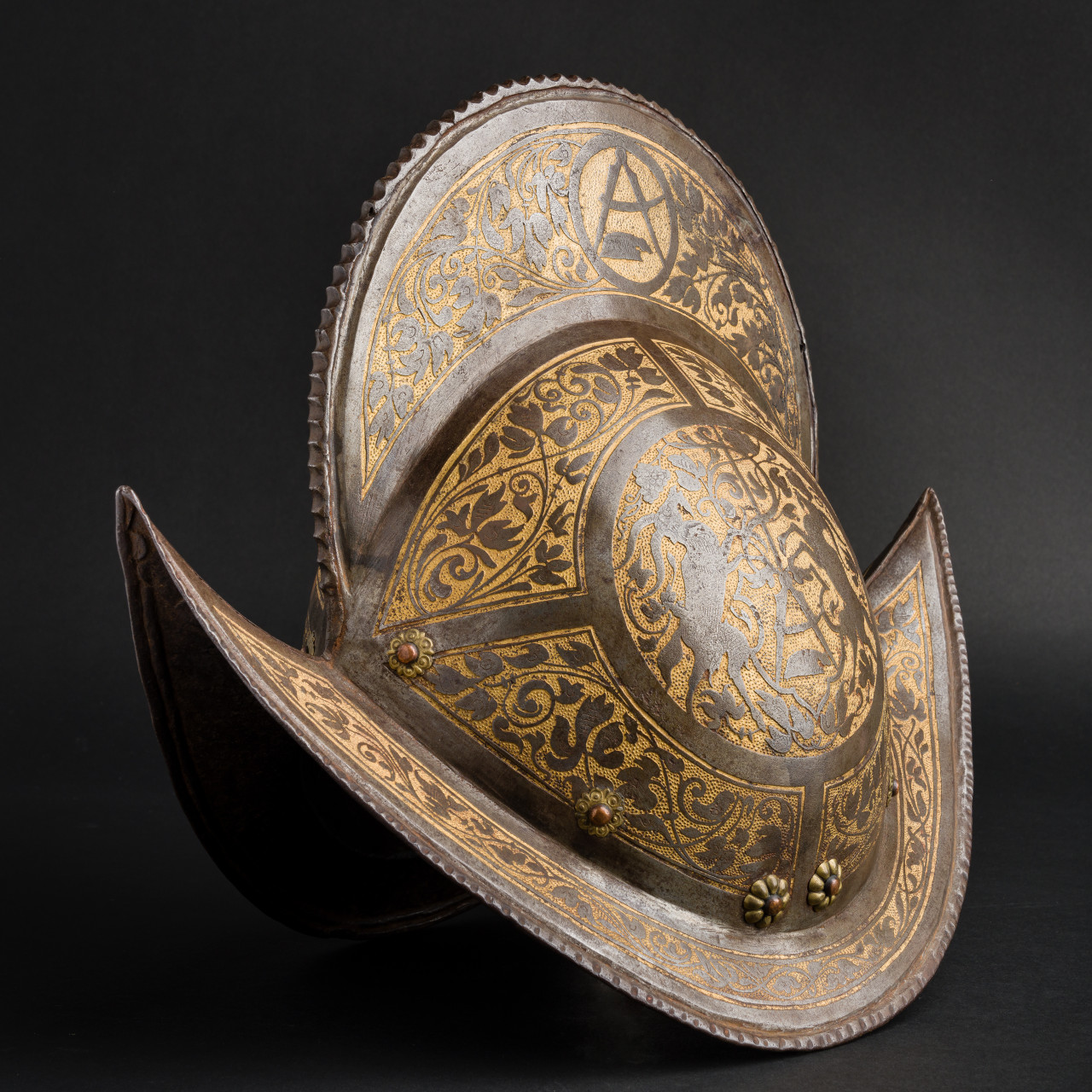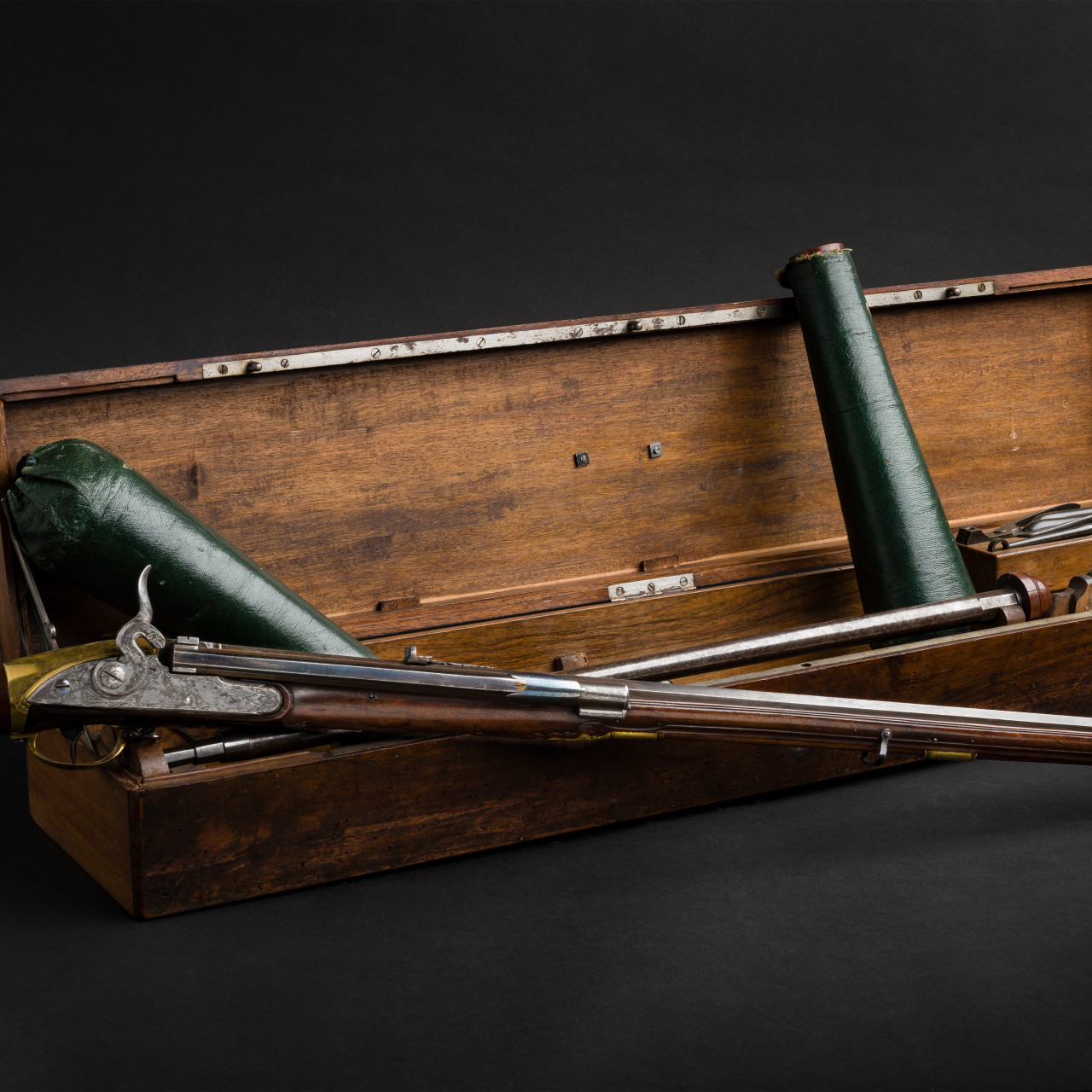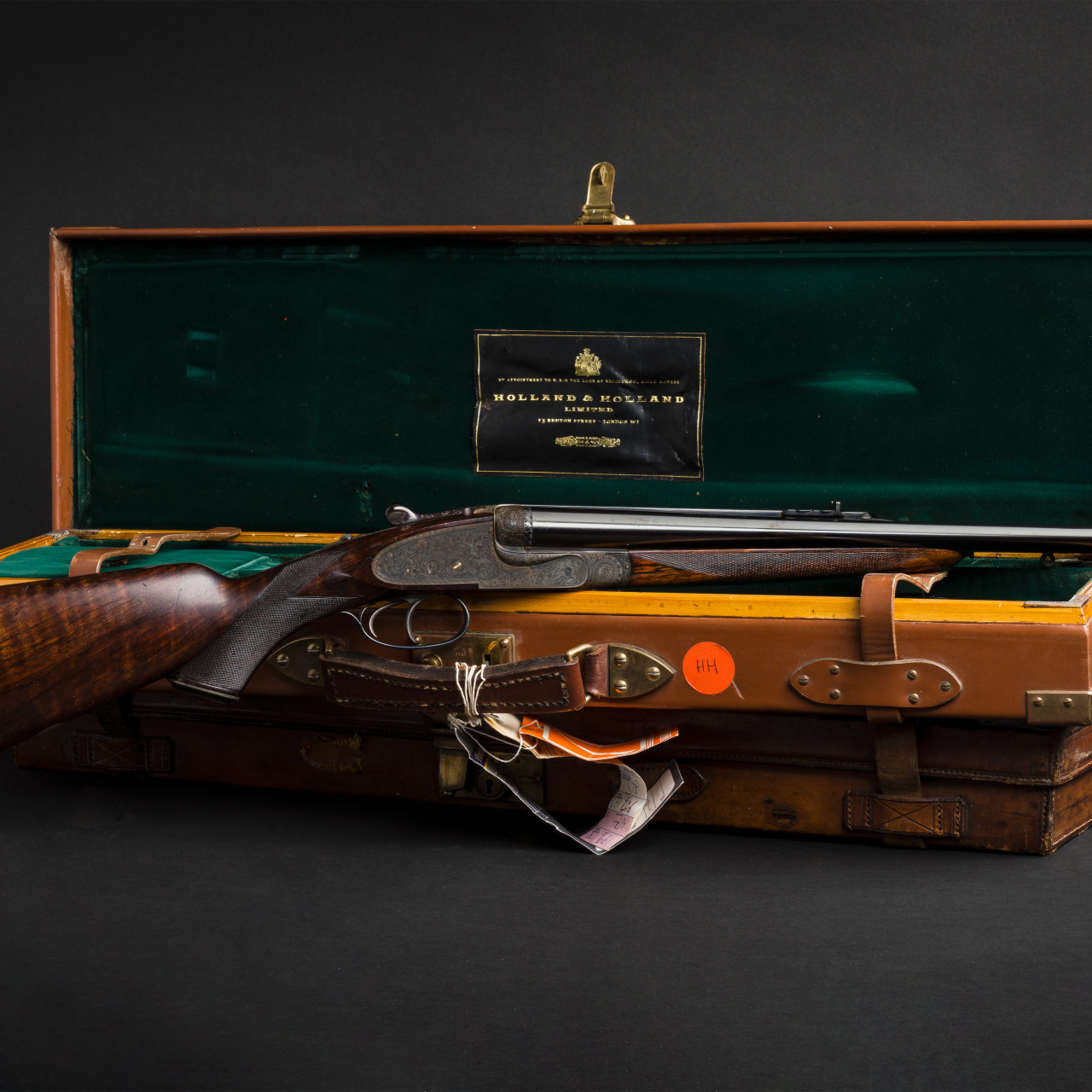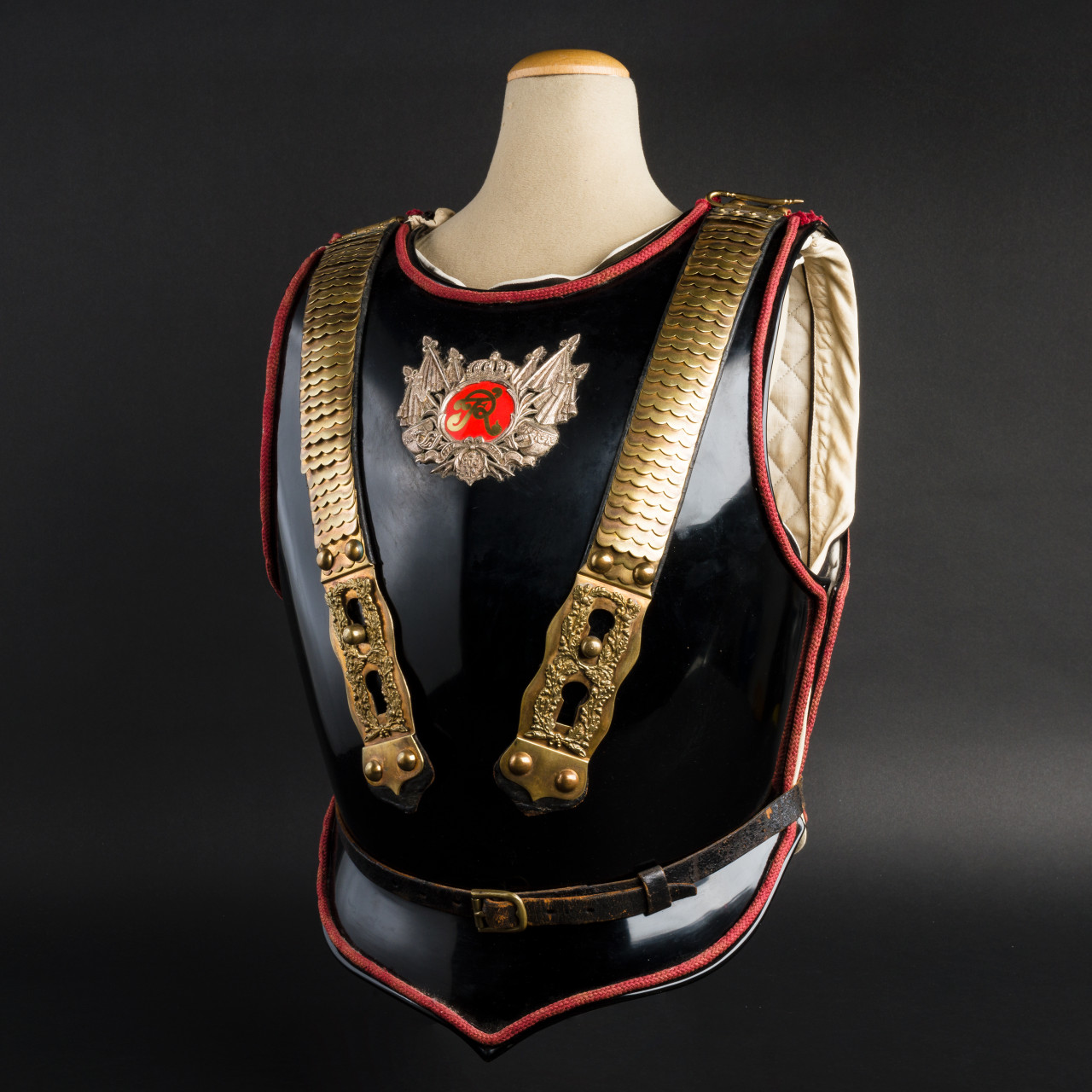MUNICH, APRIL 2022
Outstanding unique collections and not one, but two special catalogues. Hermann Historica auction house has outdone itself yet again!
From 16 to 20 May 2022, Hermann Historica auction house is re-opening its doors at long last. Almost 4,000 highly diverse objects are coming under the hammer in the live auction. What's more, the historical company is tempting its scores of bidders with the promise of unique collections and even two special catalogues.
Works of Art and Antiquities
This fantastic Spring Auction kicks off on 16 May with almost 1,000 showstoppers from the fields of art, antiquities, Asian and Russian art. Lot number 15 alone offers a preview of the numerous highlights in this auction. Dating from the late 6th to the early 7th century, the Sasanian bowl shows a great king surrounded by his servants and musicians, the scene virtually unprecedented in terms of its complexity and charm. The minimum bid of 250,000 euros will secure this antique pièce de résistance.
Next up, the great many elaborate details lend distinction to lot 41. The monumental grave urn from Apulia is sure to be well received at 25,000 euros. The painted temple scene appears almost lifelike with its vibrant colours. This magnificent example of a grave hydria dates from the 4th century B.C. and stands a whopping 70 cm tall and 50 cm wide.
Another urn originating from the Roman Empire of the 1st century A.D. has exceptionally graceful lines and an unusual sealing mechanism, a symbolic device that enables the dead to take part in the funeral ceremony. Special mention must however be made of the profound philosophical motto in large letters: "How much there is in life of glory, virtue and honour, is shown by how small a heap of ashes death makes of it." This masterpiece of Roman material and intellectual culture is now listed as lot number 59 for 25,000 euros.
Calligraphy was not the exclusive province of the Romans: it was widely practised in Chinese cultures hundreds of years ago, too. Stylised characters and the artistic writing thereof have been considered supreme there since time immemorial. Not one but two pots for storing brushes (lots 129 and 136) embody this tradition in exemplary fashion with their skilfully executed lettering. The opening price of each is 2,000 euros.
Lot 158 is embellished with a masterly representation of Chinese brush art, albeit not in written but in painted form. A famille rose vase of sizeable proportions boasts an impressive scene with herds of deer dotted across an idyllic mountain landscape. Especially in China, deer were considered highly symbolic. Deer, and thus by extension this colourful masterpiece, are considered propitious for a long, healthy life and prosperity, more than justifying the reserve of 3,000 euros, particularly in times like these.
Lot 410 in the antiquities section merits particular attention. The beautiful, 17th century Augsburg casket is a noteworthy example of superb German marquetry craftsmanship. The lid displays three coats of arms, enamelled in colour and highlighted in gold, surrounded by exquisite ivory ornaments. The interior is lined in the finest paper, decorated with gold foliage. Bids are now invited from 18,000 euros for this museum-quality piece.
One highlight among the silverware is a Gothic communion chalice, probably dating from the 15th century. Listed as lot number 473, the chalice is now expected to fetch 15,000 euros. Meanwhile, buyers will also be interested in lot number 497, a silver goblet by court goldsmith Theodor Heiden of Munich. The shaft and one base of the bowl are magnificently crafted. However, the 18-carat gold bowl gives this goblet the final flourish. The new owner will have to part with a minimum of 13,000 euros.
Moreover, a tiny, silver match case by Carl Fabergé in the new chapter of "Russian art" is bound to create a flurry of excitement. The sumptuous, turquoise enamel alone would make this accessory an eye-catcher; however, the lavishly sparkling diamonds will quicken the pulse of any art connoisseur. The lot with the number 695 now has a reserve of 4,000 euros.
Furthermore, the special collection of 230 icons is a veritable sensation, with a Menaion icon as one of the absolute top lots. The imposing devotional tableau shows all twelve months, each with four illustrations. The margins are decorated with 90 images of the Virgin Mary and the Infant Jesus. This year icon, lot number 814, is attractively estimated at 1,500 euros. A monumental icon featuring Saint Theodore of Yaroslavl and his sons David and Constantine is not just intriguing as a result of its rare subject matter, it also stands out thanks to its impressive height of 107 cm. Lot number 869 is now certain to coax an enthusiast into investing 5,300 euros.
Antique Arms and Armour from all over the world
On Tuesday, 17 May, just under 300 lots from antique arms and armour are being offered for sale.
Collectors of treasures from the Far East can look forward to lot 1018. At first glance, the Ottoman yataghan appears unostentatious; however, the finely chiselled, wootz-Damascus blade with its gilt foliage inlays, the matching gilt blade mounting with its silver-plated brass grip and floral relief decoration make this phenomenal edged weapon exceptionally imposing. It is expected to change hands for 3,500 euros.
Next up, lot 1033, a magnificent shamshir circa 1840, also comes from the Ottoman Empire. Spectacular corals and turquoise cabochons on hilt and scabbard guarantee this beautifully preserved sword a place among the premium lots. Moderately estimated at just 12,000 euros, this highly coveted model will doubtless spark a bidding war, considering that a similar weapon – in less good condition – sold for 20,000 euros in 2021.
Originating in India, lot 1059 is in immaculate condition and thus worthy of special mention. Three sparkling ruby cabochons and the delicate silver inlays on the moss green jade grip of the khanjar (circa 1800) draw the eye of the beholder. Bids from 5,000 euros are now invited for this thrusting weapon.
The defensive arms on offer will attract widespread attention, not just among curators. Lot number 1116 is an extremely rare nasal helmet dating from the era of the first crusade, such as is seldom available on the market. Both helmet and sturdy nasal bar forged in one piece, the rare headgear is expected to fetch 7,000 euros.
Moreover, lot 1117 is a real highlight. Worn by officers of a cooper's guild, the German morion was etched and gilded by true master craftsmen circa 1580. An identical helmet can be found in the collection of the Metropolitan Museum in New York. The new owner will have to part with a minimum of 10,000 euros.
Another helmet is a sight to behold, mainly due to its distinctive lines. Lot 1122 is a close helmet dated 1590 with a guide price of 12,000 euros. Given its excellent, untouched condition, every armoury will want to add this helmet to its collection.
Among the edged weapons, a particularly rare Viking sword from Scandinavia with "INGELRII" inscribed on the blade is certain to cause a stir. Today, only around 20 specimens of this group of swords are known to exist. The lot with the number 1220 also has a reserve of 12,000 euros.
Lastly, lot 1253, a heavy sabre circa 1660/70, is both awe-inspiring and terrifying at the same time thanks to the fierce lion's heads on the pommel and at the ends of the midrib, in stark contrast to the remaining gentle, ornamental etchings. This fabulous weapon may now be acquired for 4,500 euros.
Fine Antique and Modern Firearms
The auction house has almost managed to pass the 1000-lot milestone. On Wednesday, 18 May, no fewer than 967 lots are coming under the hammer. Entirely dedicated to "Fine Antique and Modern Firearms", the extensive lineup ranges from spectacular flintlock and percussion rifles through to modern "shooting devices" and accessories, taking in hunting rifles for daily use along the way. Hermann Historica will satisfy even the most discerning buyer.
Beginning with the civil firearms, an extremely early wheellock rifle immediately catches the eye (lot 2026). Made in South Germany back in 1550, this rifle boasts a combined matchlock and wheellock action. The profuse, delicately engraved bone inlays show fanciful mythical creatures amidst superb scrolling bands and tendrils. The outstanding workmanship and exceptionally good condition allow the piece to command its price, opening at 19,000 euros.
A pair of deluxe percussion pistols by Louis Perrin LePage of Paris (lot 2109) has equally ostentatious embellishment. The signature of the celebrated master of arms stands out against the lavish, stunning etched floral décor. The asking price of 9,000 euros includes the original case of ebonised walnut and a large selection of accessories.
In the section of compressed air rifles and pistols, lot 2127 is worthy of special mention. A Girardonis system air rifle is expected to fetch 12,000 euros. The weapon itself is seldom found on the market; however, the fact that this one comes with the rare original case, along with an extensive range of matching accessories, is nothing short of a sensation.
Meanwhile, another exceptional item is a cartridge box made of hammered sheet iron (lot 2129). The semi-circular box from Brunswick, dated circa 1570/80, will not disappoint with its fully sculptured depictions of Abraham and David amidst scrollwork. Bids from 5,500 euros are welcome.
In the hunting weapons chapter, lot number 2207 is certain to be the centre of attention: a double rifle by Holland & Holland, the Royal model, with two matching cases. The name "Royal" is more than fitting. Not only are the side panels, trigger guard and one of the cases colour case hardened, they are decorated all over with delicate arabesques and fine fringe engravings. The absolutely mint condition of the exquisite double rifle is reflected in the reserve of 35,000 euros.
The innumerable highlights among the modern small arms include this self-loading pistol, which was made in Austria by Salvator and Dormus (lot number 2719). Just a few are known to exist around the world. Buyers will have a chance to acquire a model 1894/96 for 15,000 euros.
Moreover, another, absolutely rare semi-auto pistol is the test weapon developed by Swiss master gunsmith Müller of Winterthur. Dated 1902, it is listed as lot number 2762. The dream of owning such an exceptional pistol can come true for the minimum bid of 12,000 euros.
Finally, a sought-after "long pistol 08" in immaculate condition, produced in 1915, is offered for sale as lot number 2851. The shoulder stock stamped with matching numbers and the dark brown leather case with the manufacturer's mark "Eckart Ulm 1915", this showpiece will grace a new collection for 2,500 euros.
Orders and Military Collectibles until 1918 and The Van Bosstraeten Collection
On 19 May, buyers can look forward to a great many prizes from Germany and all over the world among the "Orders and Military Collectibles until 1918". Over 350 lots are coming under the hammer on this Thursday morning. Nevertheless, Hermann Historica is renowned for having an extra treat in store, a final flourish as it were. Comprising almost 430 exceptional lots of the finest quality, the superlative Van Bosstraeten Collection is sure to bring a gleam to the eye of any military enthusiast. Bidding starts at 3 p.m.
Among the decorations, a Cross 2nd Class from the Order of St. Anna is worthy of special mention (lot 3006). The much sought-after order by Julius Keibel is rare in itself. However, the exquisite workmanship of this 1867 piece makes this medal, estimated at 15,000 euros, a must for every serious order collector.
Moreover, the memorabilia from imperial and royal houses include several showstoppers. One of the top lots is an opulent gift box with a delicately painted portrait of Princess Alexandra Amalie of Bavaria dating from 1850 (lot 3096). The gold box by C. M. Weishaupt & Söhne was presented by the Princess to the later Empress Sisi on the occasion of her 13th birthday. Today, this gift will assuredly coax an admirer into investing 7,500 euros. Next up, lot 3111 will create a flurry of excitement. A glorious lime green summer dress worn by Sisi is sure to be well received at 12,500 euros. Made by the fashion house "Robes & Confections - Mme Masson", the two-part gown in the finest silk with a beautiful bow at the back was one of the Empress' favourite outfits.
Meanwhile, collectors of edged weapons will snap up a historical, heavy cavalry sword for an officer in the Baden Garde du Corps. The fabulous thrusting weapon (lot 3207) was forged circa 1815. The gold-coloured lion's head perches majestically on the pommel above the ornate coat of arms on the basket hilt. Bids from 3,400 euros are now invited for this sword.
Equally formidable is the distinguished early helmet for officers of the Hanoverian Garde du Corps Regiment, circa 1818 - 1820. The numerous details, such as the large, three-dimensional lion's heads and paws on the clasp and its imposing fur crest, round off this sensational headgear. The helmet with the lot number 3254 is now expected to fetch 3,000 euros.
In the afternoon, an exceptionally outstanding military collection, the Van Bosstraeten collection comprising over 400 lots, is coming up for sale. Dating from Germany's Imperial Era, the meticulously selected pieces range from small belt buckles right through to large cuirasses. Over the years, the collection has gone from strength to strength. Nonetheless, the number one criterion was invariably the quality of the rare objects.
In good condition, a test helmet no. 8 of the Ford Motor Company is arguably the first premium lot of note (lot 4013). The helmet is a superb blend of old and new. While the helmet shape is characteristic of the Late Middle Ages, this highly modern example is made completely of ochre-painted steel. This extremely rare model is valued at 3,000 euros. Similar test helmets can be found in the collection of the Metropolitan Museum of Art in New York.
In the uniform section, lot 4057 stands head and shoulders above the rest. Still in fine condition, this splendid uniform was made for Prince Alfons of Bavaria when he was General of the Cavalry and proprietor of the 7th Chevaulegers Regiment. The white parade rabatt stands out beautifully against the green tunic. On the inside is a label showing the Prince's name as the wearer and the manufacturer Christian Schwarz & Sohn. Complete with the matching visor cap, the uniform has a reserve of 2,800 euros.
This incomparable set, lot 4110, truly is one of the highlights of this collection. A helmet for officers of the Garde du Corps Regiment cannot fail to impress, thanks to its virtually untouched condition. The excellent condition of the silver-plated parade eagle with its gilt crown and the two complete storage cases, with all their straps in place, make this lot a triumph. Seldom available on the market, this rare piece is without equal in terms of quality and can now be acquired for 18,000 euros.
The spectacular lot 4141 was also worn by officers of the Garde du Corps Regiment. Dated 1897, the admirable cuirass is a highly unusual piece and in immaculate condition to boot. It was originally presented to the regiment by Kaiser Wilhelm II in 1897. A collector's dream come true, the cuirass is destined to take pride of place for 8,500 euros.
Talking of rarities, the parade of exceptional lots continues with a busby for officers of the 3rd Royal Saxon Hussar Regiment No. 20. Catalogued at number 4172, the top lot in fluffy possum fur has a brass star with an appliquéd royal coat of arms – and an asking price of 4,000 euros. The matching white feather plume with its green stem gives this extremely rare, beautifully preserved headgear a certain elegance.
On the last day of the auction week, on 20 May, the catalogue “Orders and Military Collectibles from 1919 onwards” showcases some very rare pieces. And last but not least, the auction house Hermann Historica will offer an outstanding collection of Viennese binoculars: The collection of more than 300 objects covers almost 100 years of development history, from monocular telescopes to the aiming torpedoes, from civilian to military optics. The lots, which are presented in a special catalogue, will be auctioned from 5 p.m. onwards.
Why not browse through the Hermann Historica auction catalogues? They include detailed descriptions of all lots, along with numerous high-quality photographs.
You are cordially invited to inspect all objects in person at the offices of Hermann Historica in Grasbrunn, near Munich. The pre-sale viewing will take place from Monday, 09 May to Saturday, 14 May, between 11 am and 5 pm each day. As usual, the Hermann Historica experts will be on hand to advise customers. We will observe the current COVID-19 regulations, as published on our website.
Please note: all prices quoted are net prices and do not include the 25% premium (and VAT).
Press contact:
UTA BAUMANN
Communication and Press
Bretonischer Ring 3
85630 Grasbrunn / München
DEUTSCHLAND
Phone: +49 (0) 89 - 54 72 64 9 - 0
Fax: +49 (0) 89 - 54 72 64 9 - 999
Copy permitted – please send proof to:
Hermann Historica GmbH
Marketing Department
Bretonischer Ring 3
85630 Grasbrunn / Munich
DEUTSCHLAND
or by Email to:
press@hermann-historica.com
Further information and high-definition
photo material
Request to:
press@hermann-historica.com
All photos:
Copyright Hermann Historica GmbH 2022
Press release:







